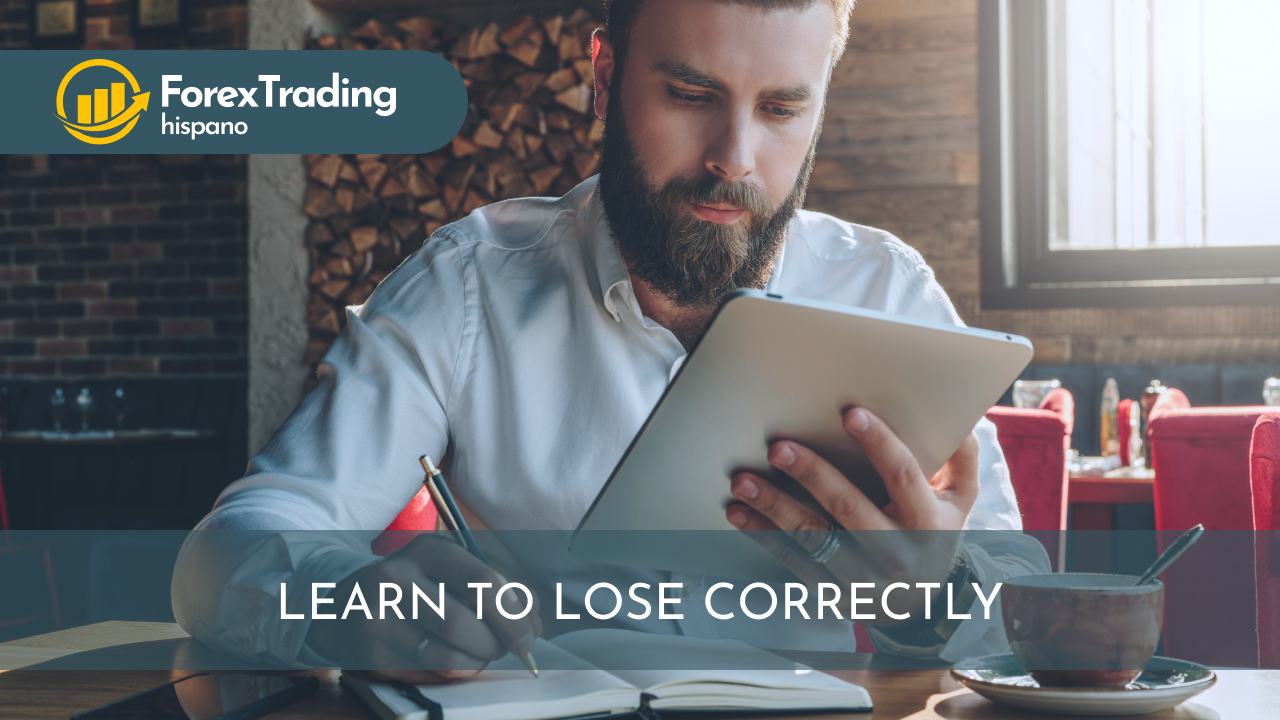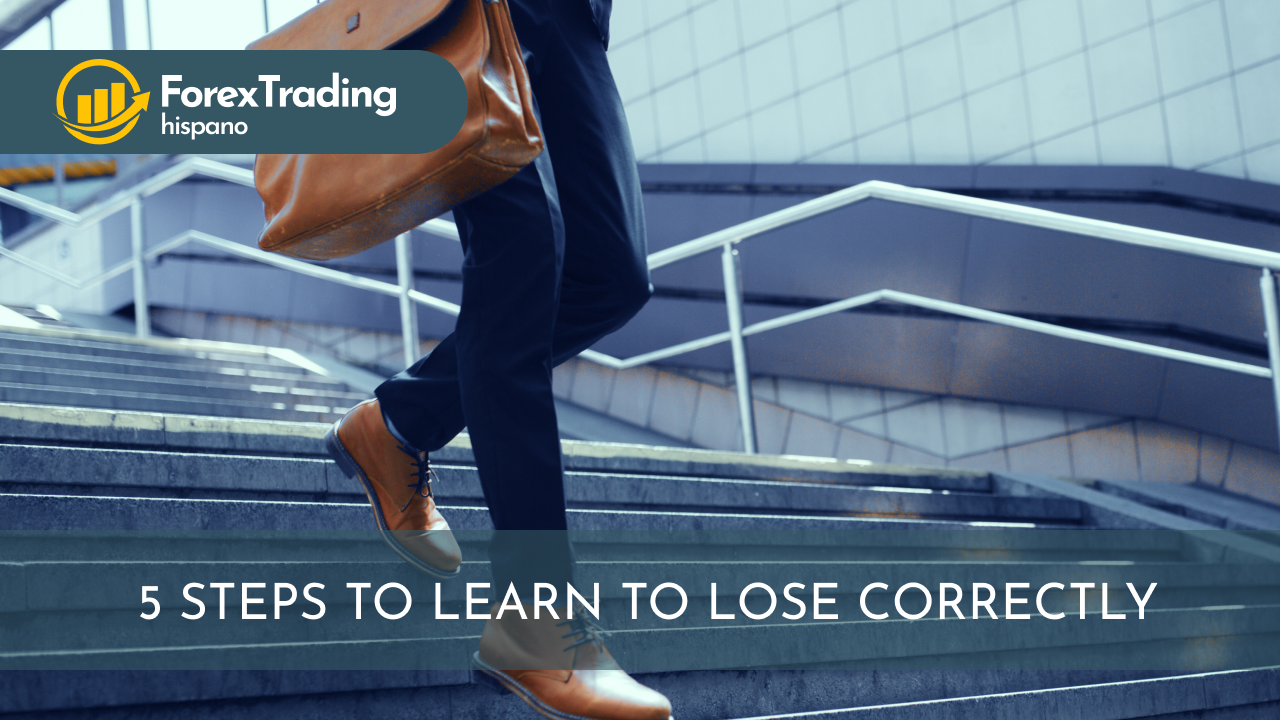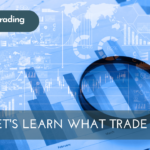I know it may sound cliché, but losing is a fundamental part of winning, especially in trading. If you want to become a truly competent trader who knows how to do this activity to the best of your ability, you must learn to lose along with learning how to trade. I also know that this is not possible a topic you “like” to talk about, and you may not even have the desire to read this article, but I promise you this is a serious mistake. Said clearly and sincerely: you will never become a successful trader if you do not understand the importance of knowing how to lose in the market and how to do it. So, if you are someone looking for a magic trick or a system that allows you to make money “fast” without losses, it may be time to stop reading right now. For the rest who want a chance to make consistent profits in the markets, keep reading …
Condition Your Brain to lose correctly …

Too many times I watch traders who start trying to avoid losses at all costs and
in various ways. The human being has something intrinsic to try to avoid losses;
it is a normal trend. But, when it comes to trading, this form of “mind
programming” do us significant harm and even leads to the disaster of your
trading account and will cause irreparable harm, if you allow it. Unfortunately,
losses are part of trading, and if that were not the case, everyone would be a
billionaire, and we all know that this is not possible. The brutal reality of
trading is that you are going to have losing trades in one way or another. If
you don’t take pre-defined and calculated losses, you will see even
greater losses that will “burn” your account. Remember, you can
delay losses, but you can’t avoid having them at all costs, and there is
usually a direct correlation between how long you delay the loss and how big the
loss itself becomes. As a trader, you simply have to see losses as a “cost” for
being able to participate in the market. Any business has an associated expense
that has to be accepted to make a profit. If, for example, you own a restaurant,
you will have a series of operating expenses such as buying food, preparing,
renting, accounting, etc. If your earnings are above your expenses, you can have
a benefit, if it is not the case, you lose money. So in trading, your costs are
the losing trades, your broker’s commissions and possibly the costs you
have when buying equipment such as a computer, etc. If you start to see losing
trades as an expense associated with trading, you will start to have a different
perspective and your thinking will transform from “trying to avoid losses”
to trying to MANAGE losses.
Why You Must Learn to Lose Properly

By learning to lose the right way you will learn to control your losses below a
predefined amount for each trade; what is known as the “R-value”. The good thing
is that YOU decide how much money you are going to risk for each trade, so this
ability gives you the possibility to eliminate any “surprises” and
will eliminate the emotions of your trading. Traders experience pain and
frustration from losing trades for two reasons: They “hope” to win
in a trade but instead, lose. They lose money without being emotionally prepared
for the loss. For your peace of mind, these two aspects can be easily arranged
in case you are prepared, to be honest with yourself and face reality. To manage
expectations regarding a trade, you simply have to understand that any trade can
be a losing trade and that you can never know for sure which of your trades are
going to be winners and which are going to become losers. Therefore, you cannot
be in the “expectation” that any trade will be a winner, regardless
of how good that pattern looks. For the same reason, I just explained, you
should never risk more money in a trade than you can emotionally / mentally
support for each trade. I say this because you cannot know in advance with
certainty which will be a winning trade and which will be a losing one. If you
do it anyway, it is your fault that you have lost more than you were willing to
lose and it will be your responsibility to handle this important psychological
aspect. The lesson of all this is this: To be able to lose properly you first
have to work on your mindset and change your thinking about losses. You must
modify your thinking about avoiding losses and focus on accepting them and
learning to manage them properly. You must modify your way of thinking of
wanting to win in each trade, to remind you that regardless of the conditions it
is impossible to win every time and that you will never know in advance which
will be a winning trade and which will be a loser, so do not have expectations
and never risk more than you feel comfortable losing for each trade.
How to Lose Properly

Great, now that you have read the above and accepted the nature of trading as it
is: random distribution of winning and losing trades. Now, let’s analyze 5
simple steps to know how to face the loss in a trade: Step 1: The first step to
knowing how to lose properly (as I have described above) is to accept that you
are going to have traders losers no matter what happens. Once you accept this
fact, you can move on to the next step, which is to map out an objective and
interpretation-free plan to minimize losses. Step 2: Then, determine the amount
of R-value that you are comfortable with in case you have a losing trade. As I
wrote to you above, I do not measure risk in pips or percentages, but I measure
it in dollars, pounds, euros, etc. Step 3: Now you have to calculate the number
of contracts or the leverage you will use in the trade. You do this by
objectively finding the best place to place your stop, and then find out how
many contracts or lots you can trade so as not to exceed the default R-value in
that trade. Remember to place your stop loss based on objective monetary
management rules and market dynamics (price action / specific price values) and
not based on greed or emotion. Step 4: Place the trade and forget. Once you have
made the trade and have taken into account all the parameters: entry, exit (stop
loss and profit target) and the number of lots/contracts, it is time to forget
about the trade for a while. One of the fundamental steps to learn how to lose
properly is to simplify and not interfere in your trades. Most of the time,
removing your presence from the equation once your trade is on the market is the
best thing to do. What I recommend to any beginner is precisely this: leave your
trade alone and stop looking at your screen. Step 5: Never try to avoid losses.
This is where psychology comes into play and it can play tricks on you. The
biggest mistake you can make is adjusting the stop as the price approaches to
touch it. You have to remember that you cannot avoid losses, because, in the
end, they will happen to you, even if you try to “avoid” them every
time; because you will develop a bad habit that will eventually lead you to lose
money. You must stick to your trading strategy and remain disciplined, accepting
that the market will touch your stop loss on some occasions. If you have an
objective and interpretation-free trading plan, you can take the planned losses
and it will be a successful exit, even if you have touched the stop. Success
comes from carefully following your trading plan and being disciplined.
One last word about knowing how to lose …

Please do not overlook the lessons in this article, because doing so will be a
serious mistake that you can make as a trader. It is time to take your ego and
your desire to win in each trade and put them aside because both things are only
going to make you lose money in the markets, and I know that you do not want to
lose money. Trading is a difficult activity for most people because they cannot
get the FACT that they will have both losing trades and winning trades. Most
lose focus by trying to avoid losing trades and by trying they create a “monster”.
That monster is bad habits that translate into a trading account that “burns”
little by little. The only way to win in trading is to control and manage losses
in such a way that when you do have winning trades, the latter will be able to
surpass any losses you may have in profits, leaving you with a profit. Remember,
it is like having your own business; your profits must be greater than your
operating costs to make a profit.





